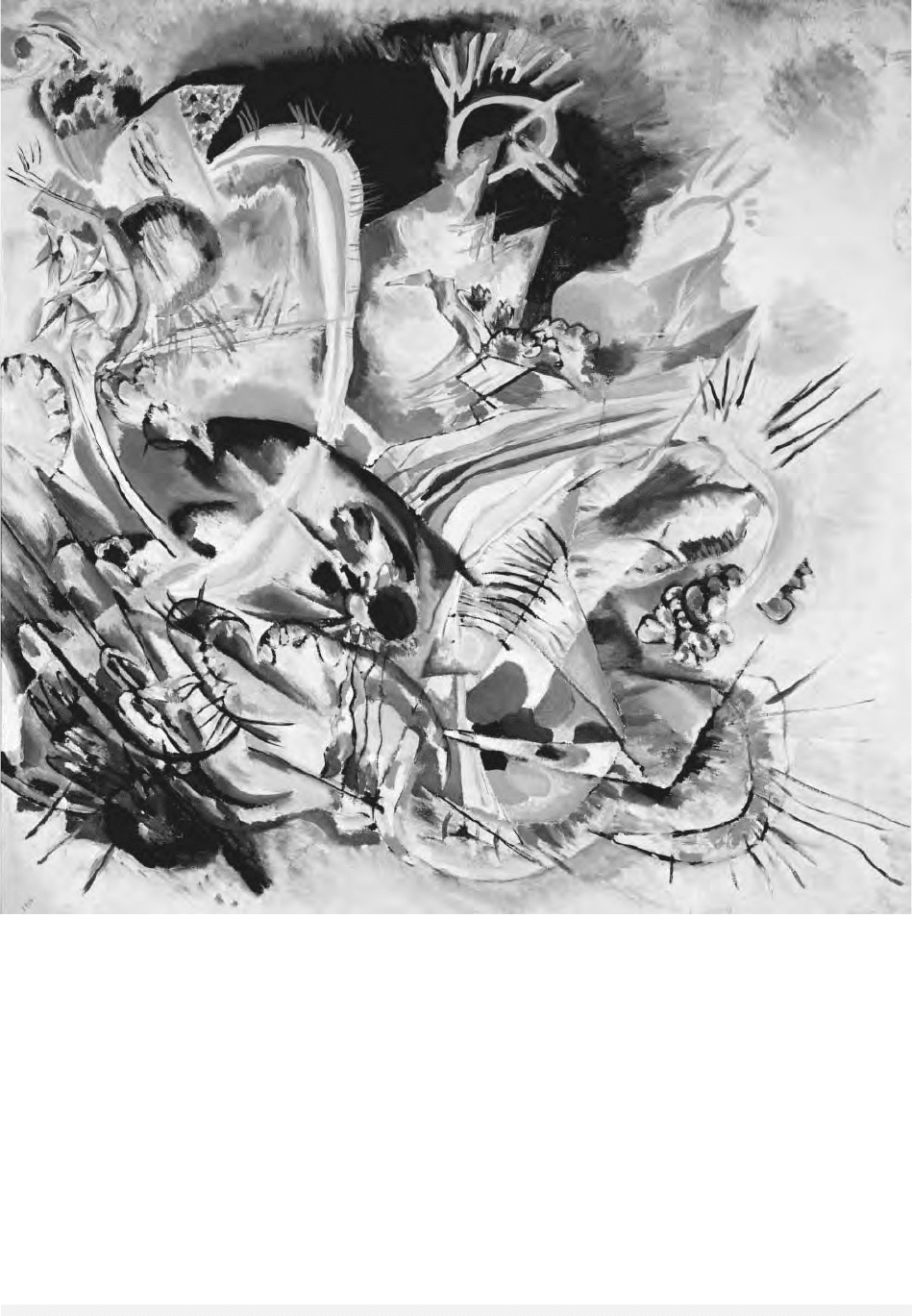Encyclopedia of Russian History
Подождите немного. Документ загружается.


Hudgins, Sharon W. (2003). The Other Side of Russia: A
Slice of Life in Siberia and the Russian Far East. Col-
lege Station: Texas A&M University Press.
Lincoln, W. Bruce. (1994). The Conquest of a Continent:
Siberia and the Russians. New York: Random House.
Marx, Steven G. (1991). Road to Power. Ithaca, NY: Cor-
nell University Press..
Mote, Victor L. (1998). Siberia Worlds Apart. Boulder, CO:
Westview Press.
Thubron, Colin. (1999). In Siberia. New York: Harper
Collins.
Treadgold, Donald W. (1957). The Great Siberian Migra-
tion. Princeton, NJ: Princeton University Press.
Tupper, Harmon. (1965). To the Great Ocean. Boston, MA:
Little, Brown.
V
ICTOR
L. M
OTE
SIGNPOSTS See VEKHI.
SIKORSKY, IGOR IVANOVICH
(1889–1972), scientist, engineer, pilot, and entre-
preneur.
Igor Sikorsky designed the world’s first four-
engined airplane in 1913 (precursor to the most
successful bomber of World War I) and the world’s
first true production helicopter. His single-rotor de-
sign, a major breakthrough in helicopter technol-
ogy, remains the dominant configuration in the
early twenty-first century. The winged-S emblem
still signifies the world’s most advanced rotorcraft.
Born in Kiev, Russia, Sikorsky was the youngest
of five children. His father, a medical doctor and
psychologist, inspired him to explore and learn. He
developed a keen interest in mechanics and astron-
omy. While still a schoolboy he built several model
aircraft and helicopters, as well as bombs. After
completing formal education in Russia and France,
Sikorsky attracted international recognition in
1913 at the age of twenty-four when he designed
and flew the first multimotor airplane. In 1918,
Sikorsky decided to flee his native country: “What
were called the ideals and principles of the Marxist
revolution were not acceptable to me.” He left Pet-
rograd (St. Petersburg) by rail for Murmansk and
from there boarded a steamer for England. Having
lost all his savings, he arrived in England with only
a few hundred English pounds.
He settled in the United States in 1919, even-
tually founding the Sikorsky Aero Engineering Cor-
poration, the forerunner of the Sikorsky Division
of United Technologies. In the early twenty-first
century the corporation manufactures helicopters
for sale around the world. Continually designing
aircraft, Sikorsky received many other patents, in-
cluding patents for helicopter control and stability
systems. He grasped the humanitarian advantages
of helicopters over airplanes. “If a man is in need
of rescue,” he said, “an airplane can come in and
throw flowers on him, and that’s just about all . . .
but a direct-lift aircraft could come in and save his
life.” In the 1930s, Sikorsky designed and manu-
factured a series of large passenger-carrying flying
boats that pioneered the transoceanic commercial
air routes in the Caribbean and Pacific.
See also: AVIATION
BIBLIOGRAPHY
Cochrane, Dorothy. (1989). The Aviation Careers of Igor
Sikorsky. Seattle: University of Washington Press.
Hunt, William E. (1998). ’Heelicopter’: Pioneering with Igor
Sikorsky: Based on a Personal Account. Shrewsbury,
UK: Airlife Pub.
Sikorsky, Igor Ivan. (1941). The Story of the Winged-S:
With New Material on the Latest Development of the
Helicopter; an Autobiography by Igor I. Sikorsky; with
Many Illustrations from the Author’s Collection of Pho-
tographs. New York: Dodd, Mead & Co.
Spenser, Jay P. (1998). Whirlybirds: A History of the U.S.
Helicopter Pioneers. Seattle: University of Washing-
ton Press.
J
OHANNA
G
RANVILLE
SILVER AGE
From the late nineteenth century until World War
I, the Russian visual, literary, and performing arts
achieved such creative brilliance that observers—
not least the critic and poet Sergei Makovsky (1878–
1962)—described the period as a “Silver Age.” Many
individuals, institutions, and ideas contributed to
this renaissance: Sergei Diaghilev (1872–1929) and
the St. Petersburg World of Art; painters Lev Bakst
(1866–1924), Viktor Borisov-Musatov (1870–1905),
and Mikhail Vrubel (1856–1910); writers Kon-
stantin Balmont (1867–1942), Andrei Bely (pseu-
donym of Boris Bugayev, 1880–1934), Alexander
Blok (1880–1921), Valery Bryusov (1873–1924),
SILVER AGE
1393
ENCYCLOPEDIA OF RUSSIAN HISTORY

and Vyacheslav Ivanov (1866–1949); the Ballets
Russes; the new theaters with their repertoires of Ib-
sen and Maeterlinck; and the architecture of the style
moderne—all shared the eschatological mood of the
fin de siècle heightened by the disasters of the Russo-
Japanese War and the 1905 Revolution.
There was a climactic and ominous sense in the
culture of the Russian Silver Age, for its poetry
spoke of femmes fatales and fleshly indulgence, and
its painting depicted twilights and satanic beasts.
Perhaps even more than the Western European
Symbolists, the Russian poets, painters, and philoso-
phers made every effort to escape the present by
looking back to an Arcadian landscape of pristine
myth and fable or by looking forwards to a utopian
synthesis of art, religion, and organic life. For Rus-
sia’s children of the fin de siècle, Symbolism became
much more than a mere esthetic tendency; rather,
it represented an entire worldview and a way of
life that informed the intense visions of Bely, Blok,
and Vrubel; the religious explorations of the priest,
mathematician, and art historian Pavel Florensky
(1882–1937); the decorative flourishes of Bakst and
Alexandre Benois (1870–1960); and even the ab-
stract systems of Vasily Kandinsky (1866–1944)
and Kazimir Malevich (1878–1935). Bely’s novel
Petersburg, Blok’s poem “The Stranger,” Vrubel’s
images of torment and distress, and the galvaniz-
ing music of Alexander Skryabin (1872–1915) all
express the nervous tension and febrile energy of
the Russian Silver Age.
Its most original artist was Vrubel, whose fer-
tile imagination produced disconcerting pictures
such as Demon Downcast (1902, Tretiakov Gallery,
Moscow; hereafter “TG”). While the definitions
“Art Nouveau” and “Neo-Nationalism” come to
mind in the context of his work, Vrubel approached
the act of painting as a constant process of exper-
imentation, returning to his major canvases again
and again, erasing, repainting, altering. His releas-
ing of the energy of the ornament and his intense
elaboration of the surface even prompted future
critics to consider his painting in the context of Cu-
bism, for his broken brushwork strangely antici-
pated the visual dislocation of the late 1900s.
Even so, a characteristic of the Russian Sym-
bolists was more recreative than experimental in
nature, characterized by the aspiration to restore
an esthetic unity to the disciplines through the re-
discovery of a common philosophical and formal
denominator. To this end, they often explored more
than one medium simultaneously. In keeping with
this interdisciplinarity, the principal artistic and in-
tellectual society with which many of them were
associated was called the “World of Art.” Hostile
toward both the Academy and nineteenth century
Realism, the World of Art owed its singular vision,
practical organization, and public effect to Di-
aghilev, who in 1898 launched the famous maga-
zine of the same name (Mir iskusstva, 1898–1904),
sponsored a cycle of important national and inter-
national exhibitions, and propagated Russian art
and music successfully in the West. The World of
Art artists and writers never issued a written man-
ifesto, but their attention to artistic craft, cult of
retrospective beauty, and assumed distance from
the ills of sociopolitical reality indicated a firm be-
lief in “art for art’s sake” and a sense of measured
grace, which they identified with the haunting
beauty of St. Petersburg.
The fame of several World of Art painters, par-
ticularly Bakst and Benois, rests primarily on their
set and costume designs for Diaghilev’s Ballets
Russes (1909–1929), which, with its emphasis on
artistic synthesis, evocation of archaic or exotic cul-
tures, and invention of a new choreographic, mu-
sical, and visual communication, can be regarded
as an extension of the Symbolist platform. The ease
with which the World of Art transferred pictorial
ideas from studio to stage (for instance, produc-
tions such as Cléopatre of 1909, designed by Bakst,
Petrouchka of 1911, designed by Benois, and Le Sacre
du Printemps of 1913, designed by Nicholas Roerich
[1874–1947]) was indicative of a general tendency
toward “theatralization” evident in the culture of
the Silver Age. Here was an exaggerated sensibil-
ity, but also a conviction that artistic movement
was the common denominator of all “great” works
of art. This could take the form of physical move-
ment, such as dance, rhythm, and gesture, or of
abstract equivalents, such as poetical meter and
music, which, for all the Symbolists, was the high-
est form of expression, the most intense and yet
the most minimal material.
A bastion of the Symbolist cause, the World of
Art encompassed a multiplicity of artistic phe-
nomena: the consumptive imagery of Aubrey
Beardsley and the stylizations of the early Kandin-
sky; the Art Nouveau designs of Charles Rennie
Mackintosh and Elena Polenova (1850–98); and the
Decadent verse of Zinaida Gippius (1869–1945) and
Dmitry Merezhkovsky (1866–1941). The World of
Art fulfilled the practical function of propagating
Russian art at home and abroad and of granting
the Russian public access to the work of modern
SILVER AGE
1394
ENCYCLOPEDIA OF RUSSIAN HISTORY

Western artists through exhibitions and publica-
tions.
The Russian Silver Age was not confined by
strict geographical or social boundaries, for it
also flowered—and perhaps more luxuriously—in
Moscow and the provinces. Even Saratov, a small
town to the south of Moscow, became a major
center of Symbolist enquiry, thanks to the activi-
ties of the painter Borisov-Musatov, who, together
with Vrubel, exerted a profound and permanent in-
fluence on the evolution of Russian Modernism.
Impressed by Puvis de Chavannes and the Nabis
during his residence in Paris, Borisov-Musatov in-
corporated their monumentalism and subdued
palette into his elusive depictions of such wraith-
like women as in Gobelin (1901, TG) and Reservoir
(1902, TG). Evoking a gentler and more tranquil
age, Borisov-Musatov shared the Symbolists’ de-
sire to escape from their troubled time, and one of
SILVER AGE
1395
ENCYCLOPEDIA OF RUSSIAN HISTORY
Improvisation V. by Vasily Kandinsky. The abstract works by Kandinsky can be traced to the symbolism of the Silver Age. © G
EOFFREY
C
LEMENTS
/CORBIS

his central motifs, the “Eternal Feminine,” aligned
him with poets such as Bely and Blok.
Borisov-Musatov also established a short-lived
but crucial school of painters, for he was the direct
instigator of the “Blue Rose,” a movement which
can be considered the real beginning of the avant-
garde in Russian art. Apologists of Bely’s esthetics
and Blok’s poetry, the Blue Rose artists, especially
their leader, Pavel Kuznetsov (1878–1968), used a
particular repertoire of symbols (blue-green foliage,
fountains, and vestal maidens) in order to evoke
the global orchestra that they heeded beyond the
world of appearances. Concerned with the oblique
and the intangible, they dematerialized nature and
thereby heralded the radical concept of the picture
as a self-sufficient, abstract unit. The Symbolist
journals, Vesy (Scales,1904–1909 [last issues ap-
peared only in 1910]), Iskusstvo (Art, 1905) and
Zolotoe runo (Golden Fleece, 1906–1909 [last issues
appeared only in 1910]), did much to promote their
ideas and imagery.
Reference to the Symbolist heritage helps to ex-
plain a number of subsequent developments in
Russian art, especially the abstract investigations
of Kandinsky and Malevich, for in many respects
they expanded ideas supported by the Russian in-
telligentsia of the Silver Age. As Kandinsky ex-
plained in his major tract On the Spiritual in Art,
the intuitive and the occult, not science, were the
path to true illumination. Like the Symbolists,
Kandinsky also felt that music could undermine the
cult of objects and that the inner sound could be
apprehended at moments of supersensitory or de-
viant perception. Similarly, Kandinsky was fasci-
nated with the synthetic aspect of the esthetic
experience and aspired to reintegrate the individual
arts into a Gesamtkunstwerk. Reasons for this ap-
proach differed from person to person, although
Benois, Diaghilev, and V. Ivanov agreed that Wag-
ner was to be admired for the way in which he had
combined narrative, musical, and visual forces in
the operatic drama so as to produce an expressive
whole. For Kandinsky, Wagner was a source of vis-
ual inspiration and, similarly, Skryabin’s efforts to
draw distinct parallels between the seven colors of
the spectrum and the seven notes of the diatonic
scale prompted him to investigate the possibility of
a total art.
Even as he was writing On the Spiritual in Art,
Kandinsky also pointed the way toward new es-
thetic criteria, for he emphasized the value of the
primitive, the ethnographic, and the popular, es-
tablishing a fragile alliance with a new generation
of Moscow artists such as Natalia Goncharova
(1881–1962) and Mikhail Larionov (1881–1964).
Praising the color and simplicity of Gauguin and
Matisse, on the one hand, and the vitality of in-
digenous art forms, on the other, the “new bar-
barians” rejected Symbolist mystery in favor of the
concrete and the material. Their first major exhibi-
tion, “The Jack of Diamonds” of 1910–1911, sig-
naled the tarnishing of the Silver Age, for it showed
the vulgar and the ugly, promoting graffiti, chil-
dren’s drawings, and store signboards as genuine
works of art instead of the impalpable visions of
the astral plane and religious ecstasy.
The destiny of the Russian Silver Age was both
full and empty. On the one hand, the Symbolists
left a positive construction, because some of their
ideas and artifacts prefigured the linguistic and vis-
ual experiments of the avant-garde in the 1910s
and 1920s, including the geometric reductions of
Malevich known as Suprematism. Even the notion
of a single and cohesive style joining architecture
and the applied arts, promoted by the Construc-
tivists in the wake of the October Revolution, can
be viewed as outgrowths of the Symbolists’ con-
cern with the total, organic work of art. On the
other hand, if the Russian Symbolist poets and
painters glimpsed beyond the veil, they rarely com-
pleted the voyage to the other shore. As they jour-
neyed, they erred in bold transgressions and called
for synthesis and synaesthesia as they sought a
spiritual equilibrium for their uneasy era. Ulti-
mately, if their fine antennae did pick up the ce-
lestial signals, the sound was so powerful that it
caused a “dérèglement de tous les sens”—and not
just metaphorically, but in the literal meaning of
that phrase.
See also: DIAGILEV, SERGEI PAVLOVICH; FUTURISM;
GOLDEN AGE OF RUSSIAN LITERATURE; KANDINSKY,
VASILY VASILIEVICH
BIBLIOGRAPHY
Bowlt, John E. (1982). The Silver Age: Russian Art of the
Early Twentieth Century and the “World of Art” Group.
Newtonville, MA: Oriental Research Partners.
Brumfield, William C. (1991). The Origins of Modernism
in Russian Architecture. Berkeley: University of Cali-
fornia Press .
Elliott, David, ed. The Twilight of the Tsars: Russian Art at
the Turn of the Century. Catalog of exhibition at the
Hayward Gallery, London, March 7–May 19, 1991.
Engelstein, Laura. (1992). The Keys to Happiness. Sex and
the Search for Modernity in Fin-de-siècle Russia. Ithaca,
NY: Cornell University Press.
SILVER AGE
1396
ENCYCLOPEDIA OF RUSSIAN HISTORY

Kandinsky, Vasily. (1946). On the Spiritual in Art. New
York: Solomon R. Guggenheim Foundation.
Proffer, Carl and Proffer, Ellendea, eds. (1975). The Silver
Age of Russian Culture: An Anthology. Ann Arbor, MI:
Ardis.
Pyman, Avril. (1994). A History of Russian Symbolism.
Cambridge, UK: Cambridge University Press.
Richardson, William. (1986). “Zolotoe runo” and Russian
Modernism. Ann Arbor, MI: Ardis .
Rosenfeld, Alla, ed. (1999). Defining Russian Graphic Arts
1898–1934: From Diaghilev to Stalin. New Brunswick,
NJ: Rutgers University Press.
Salmond, Wendy, ed. The New Style: Russian Perceptions
of Art Nouveau. Special issue of the journal Experi-
ment 7 (2001).
J
OHN
E. B
OWLT
SIMEON
(1316–1353), prince of Moscow and grand prince
of Vladimir.
Like his father Ivan I Danilovich “Moneybag,”
Simeon Ivanovich (“the Proud”) collaborated with
the Tatar overlords and secured a preferential sta-
tus. After Ivan I died in 1340, Simeon and rival
claimants visited the Golden Horde in Saray to so-
licit the patent for the grand princely throne. Khan
Uzbek gave it to Simeon, who became the khan’s
obedient vassal and was thus able to wield at least
limited jurisdiction over rival princes. He also ob-
tained the khan’s backing for his campaigns against
Grand Prince Olgerd of Lithuania who, in the
1340s, increased his incursions into western Rus-
sia. Simeon waged war on Novgorod and forced it
to recognize him as its prince and to pay Tatar trib-
ute to him. With the help of Metropolitan Feog-
nost he asserted greater control over the town than
his father had done. During Simeon’s reign the
principality of Suzdal–Nizhny Novgorod replaced
Tver in the rivalry for supremacy with Moscow.
Although the Tatars helped Simeon fight foreign
enemies, after 1342 Khan Jani-Beg refused to help
him become stronger than his rivals in northeast
Russia. Specifically, he prevented Simeon from in-
creasing the size of his domain and his power as
grand prince.
Simeon’s agreement with his brothers in the
late 1340s alludes, for the first time, to the ap-
panage system of Moscow. The document describes
the relationship between the grand prince and his
brothers and recognizes the domains that Ivan I al-
located to his sons as hereditary appanages. On
April 26, 1353, Simeon died from the plague.
See also: APPANAGE ERA; GRAND PRINCE; MOSCOW; MUS-
COVY
BIBLIOGRAPHY
Fennell, John L. I. (1968). The Emergence of Moscow,
1304–1359. London: Secker and Warburg.
Martin, Janet. (1995). Medieval Russia, 980–1584. Cam-
bridge, UK: Cambridge University Press.
M
ARTIN
D
IMNIK
SIMONOV, KONSTANTIN MIKHAILOVICH
(1915–1979), Russian writer and Writers’ Union
official who specialized in describing the Great Pa-
triotic War.
Konstantin Mikhailovich Simonov was born in
Petrograd, the son of a military schoolteacher. He
entered a factory school and began working in var-
ious factories while he began writing poetry. He
published his first poems in 1934 and enrolled in
the Gorky Literary Institute. After graduation in
1938, he worked as a journalist and served as a
correspondent for Red Star (Krasnaya zvezda) dur-
ing the war.
During the war, he began to write plays and
fiction about his experiences and became quite pop-
ular during the 1940s and 1950s. The novel Days
and Nights described the battle of Stalingrad in a
realistic, natural manner. His other work was noted
for its adherence to dictates of Socialist Realism. He
won numerous awards, including six Stalin prizes,
a Lenin prize, and the Hero of Socialist Labor medal.
Simonov served in many editorial and adminis-
trative positions during his career. He was editor-in-
chief of Literaturnaia Gazeta (1950–1953), a
secretary of the Union of Soviet Writers (1946–1950,
1967–1969), a member of Central Committee of
Communist Party (1952–1956), and a deputy to
the Supreme Soviet. Most interestingly, he was ed-
itor-in-chief of Novyi mir from 1954–1958, where
he presided over the publication of Vladimir Dud-
intsev’s Not by Bread Alone (Ne khlebom edinim). Un-
der attack, he soon retreated from this liberal
position and thereafter remained within the official
bounds of propriety.
In his posthumous memoirs, Through the Eyes
of a Man from My Generation (Glazami cheloveka
moego pokoleniia), Simonov provides great insight
SIMONOV, KONSTANTIN MIKHAILOVICH
1397
ENCYCLOPEDIA OF RUSSIAN HISTORY

into the world of Soviet literary politics under Stalin
and after. His life and work demonstrate the com-
promises some writers chose as they negotiated the
contours of official Soviet culture.
See also: JOURNALISM; NOVY MIR; WORLD WAR II
BIBLIOGRAPHY
Simonov, Konstantin. (1945) Days and Nights, tr. J.
Barnes. New York: Simon and Schuster.
Simonov, Konstantin. (1989). Always a Journalist.
Moscow: Progress Press.
K
ARL
E. L
OEWENSTEIN
SIMONOV MONASTERY
The Simonov Monastery in Moscow was founded
in 1370 by Fyodor, a disciple of Russia’s greatest
and most influential medieval saint, Sergius. Over
the centuries, the Simonov was to become one of
the richest monasteries in Russia. Early twentieth
century official church records place the Simonov
in the top 10 percent based on wealth.
The monastery had six major churches on its
grounds. Among them were churches dedicated to
The Tikhvin Icon of the Mother of God, to the Dor-
mition of the Virgin, and to St. Nicholas the Mir-
acle Worker. Many churches had attached side
chapels (or side altars) as well. The Tikhvin Icon
church had, for example, side chapels dedicated to
Basil the Blessed, a famous holy fool; to the mar-
tyrs Valentina and Paraskeva; to St. Sergius; to
Athanasius of Alexandria and the martyr Glykeria;
and to saints Xenophont and Maria. This indicated
a complex and intricate pattern of church struc-
ture, one that pertained to the larger, better en-
dowed monasteries.
Two of the Simonov Monastery’s leading fig-
ures became patriarchs of the Russian Church. Job,
who was appointed abbot of Simonov in 1571, was
the first patriarch in Russia (1589). In 1642, Joseph,
the archimandrite of the Simonov Monastery, was
elected to the patriarchy.
During the War of 1812 the Simonov was
looted by the Napoleonic armies when they entered
a burning Moscow. However, it quickly regained
its material well-being. Much of its income was de-
rived from visitors, pilgrims, and donations. Land
holdings outside Moscow generated income from
the production and milling of grain. In these prac-
tices, it typified many other Russian monasteries.
Of the many famous people buried there, one of
the better known is the nineteenth-century writer
Ivan Aksakov.
See also: CAVES MONASTERY; KIRILL-BELOOZERO MO-
NASTERY; MONASTICISM; RUSSIAN ORTHODOX CHURCH;
SERGIUS, ST.; TRINITY ST. SERGIUS MONASTERY
N
ICKOLAS
L
UPININ
SINODIK
The sinodik pravoslaviya corresponds to the synod-
icon adopted at the council of the Greek Orthodox
Church in 843 that condemned the iconoclasts. By
the twelfth century, the term also came to mean
“memorial book.”
The sinodik pravoslaviya contains the decisions
of the seven ecumenical councils, the names of
those under anathema, and a list of important per-
sons who deserve “many years of life,” that is, to
be remembered eternally. The text was read only
once per year in the Orthodox rite, on the first Sun-
day of Lent. In addition to the Greek version, there
are also more recent Georgian, Serbian, and Bul-
garian versions. The Russian Primary Chronicle men-
tions a sinodik under the year 1108, but the Greek
form was probably not replaced by a Russian trans-
lation until 1274. Starting around the end of the
fourteenth century, the names of fallen warriors
were also entered in the sinodik pravoslaviya. In
1763, the metropolitan of Rostov, Arseny Matsey-
vich, read aloud the anathema in the sinodik pra-
voslaviya on those who touch church property as
a protest against Catherine II’s planned seculariza-
tion of church landholdings.
The word sinodik took on a second meaning in
twelfth-century Novgorod and later in Muscovite
Russia. In this second sense it refers to a memorial
book, corresponding to the Greek Orthodox dip-
tych, containing the names of dead persons who
are to be commemorated in the daily liturgical cy-
cle. Around the end of the fifteenth century, when
the number of donors began to grow rapidly, Mus-
covite monasteries developed a system not found
in other Orthodox countries: Donors’ names were
entered in books organized around the size of the
donation. So-called eternal sinodiki listed the names
of donors who had given relatively modest gifts
and were read throughout the day. “Daily lists”
SIMONOV MONASTERY
1398
ENCYCLOPEDIA OF RUSSIAN HISTORY

(the names vary) commemorated the donors of
more substantial gifts and were read only at cer-
tain fixed points in the liturgical cycle. This seg-
mented system flourished until the beginning of
the seventeenth century. Beginning in the late fif-
teenth century, and quite often in the seventeenth,
sinodiki included “introductions” that detailed the
importance and value of care for the deceased.
Many Russian monasteries and churches still main-
tain sinodiki.
See also: DONATION BOOKS; ORTHODOXY; PRIMARY
CHRONICLE; RUSSIAN ORTHODOX CHURCH
L
UDWIG
S
TEINDORFF
SINOPE, BATTLE OF
The battle of Sinope, fought on November 30,
1853, was the last major naval action between sail-
ing ship fleets. The battle resulted from worsening
relations between the Ottoman and Russian em-
pires. For naval historians, the battle is notable for
the first broad use of shell guns, marking the end
of the use of smooth bore cannon that had previ-
ously been the primary naval weapon for nearly
three centuries. In the spring of 1853 Tsar Nich-
olas’s emissary Admiral Alexander Menshikov
broke off negotiations with the Ottoman Empire.
Menshikov opposed plans for a preemptive strike
against the Bosporus, and the Russian Black Sea
Fleet subsequently prepared for a defensive war
within the Black Sea. The Ottoman government or-
dered a squadron of Vice Admiral Osman Pasha to
the Caucasus coast in early November 1853 in sup-
port of Ottoman ground forces, but bad weather
forced the ships to seek shelter at Sinope. A Rus-
sian squadron under Vice Admiral Pavel Stepanovich
Nakhimov on his flagship Imperatritsa Maria-60
decided to attack. Following a war council, Nakhi-
mov ordered his officers in an evocation of Nelson
at Trafalgar: “I grant you the authority to act ac-
cording to your own best judgment, but I enjoin
each to do his duty.” With six ships of the line and
two frigates with 720 guns, Nakhimov attacked an
Ottoman squadron of seven frigates, three corvettes,
two steamers, two brigs, and two transports
mounting 510 guns under shore defenses with 38
pieces of artillery. The shell guns proved lethal in
Nakhimov’s two-columned assault; the only Ot-
toman vessel that managed to escape the carnage
was the steam frigate Taif-20 carrying the British
officer Slade, who brought news of the defeat to
Constantinople. Ottoman losses totaled 15 ships
and 3,000 men with the Russians taking 200 pris-
oners; on the Russian side, 37 were killed and 235
wounded. Osman Pasha, wounded in the engage-
ment, was taken prisoner.
See also: MENSHIKOV, ALEXANDER DANILOVICH; MILITARY,
IMPERIAL ERA; NAKHIMOV, PAVEL STEPANOVICH;
RUSSO-TURKISH WARS; TURKEY, RELATIONS WITH
BIBLIOGRAPHY
Daly, Robert Welter. (1958). “Russia’s Maritime Past,”
In The Soviet Navy, ed. Malcolm George Saunders.
London: Weidenfeld and Nicolson.
J
OHN
C. K. D
ALY
SINO-SOVIET SPLIT See CHINA, RELATIONS WITH.
SINYAVSKY-DANIEL TRIAL
In September 1965, Soviet authorities arrested a
well-known literary critic, Andrei Sinyavsky, and
a relatively obscure translator, Yuly Daniel, and
charged them with slandering the Soviet system in
works published abroad pseudonymously. The
works in question were often satirical but in no
sense anti-Soviet; in his essay On Socialist Realism,
for example, Sinyavsky (or “Abram Tertz”) advo-
cated nothing more radical than a return to the
adventurous style of Vladimir Mayakovsky. None-
theless, following a January 1966 press campaign
of vicious denunciations, the pair was convicted at
a show trial in February. Sinyavsky received seven
years, and Daniel five, in a strict-regime labor camp.
Conservative elements in the Leonid Brezhnev–
Alexei Kosygin regime, determined to crack down
on the intellectual experimentation of the Nikita
Khrushchev years, presumably intended the affair
as the signal of a stricter cultural line and as a
warning to intellectuals to keep quiet. But the sig-
nal was ambiguous—the conservatives were not
yet firmly in control—and the warning ineffectual.
Sinyavsky and Daniel refused to play their assigned
roles, pleading not guilty and defending themselves
in court vigorously. A public Moscow protest
against the arrests in December 1965 was followed
by a petition campaign, an increase in open protest
and samizdat, and, ultimately, the appearance of
the Chronicle of Current Events in April 1968. In fact,
the Sinyavsky-Daniel case is widely viewed as a
SINYAVSKY-DANIEL TRIAL
1399
ENCYCLOPEDIA OF RUSSIAN HISTORY

spark that galvanized the dissident movement by
raising the specter of a return to Stalinism and by
convincing many intellectuals that it was futile to
work within the system.
See also: DISSIDENT MOVEMENT; MAYAKOVSKY, VLADIMIR
VLADIMIROVICH; SHOW TRIALS; THAW, THE
BIBLIOGRAPHY
Hayward, Max, ed. and tr. (1967). On Trial: The Soviet
State versus “Abram Tertz” and “Nikolai Arzhak,” re-
vised and enlarged edition. New York and Evanston,
IL: Harper & Row.
J
ONATHAN
D. W
ALLACE
SIXTH PARTY CONGRESS See OCTOBER REVOLU-
TION.
SKAZ
A literary term originally defined as “orientation
toward oral speech” in prose fiction, can also indi-
cate a type of oral folk narrative.
Boris Eikhenbaum first described skaz, derived
from the verb skazat (“to tell”), in a pair of 1918
articles as a kind of “oral” narration that included
unmediated or improvisational aspects. Formalists
and other critics developed this analytical tool dur-
ing the 1920s, including Yuri Tynianov (1921),
Viktor Vinogradov (1926), and Mikhail Bakhtin
(1929). Tynianov analyzed the effect of skaz, ar-
guing that it enabled the reader to enter the text,
but did not really clarify the mechanism through
which it worked.
Vinogradov and Bakhtin helped refine the con-
cept of skaz as a stylistic device. Vinogradov de-
veloped the idea that skaz comprised a series of
signals that aroused in the reader a sense of speech
produced by utterance, not writing. Bakhtin placed
skaz within his own larger theory of narration,
defining it as one kind of “double-voiced utterance”
(the others being stylization and parody) in which
two distinct voices—the author’s speech and an-
other’s speech—were oriented toward one another
within the same level of conceptual authority. The
effect of oral speech is, therefore, not the primary
characteristic of skaz for Bakhtin.
Since the 1920s skaz has been identified both
as a distinctive characteristic of Russian literature
(in the work of Gogol, Zamiatin, Zoshchenko, and
others) and as a narrative device present in most
world literatures. Since the beginning of the 1980s
and the rediscovery of Bakhtin’s work, his concept
of skaz has served as a starting point for further
debate: for instance, over whether the relationship
between author and narrator is mutual and inter-
active.
See also: BYLINA; LESKOV, NIKOLAI SEMENOVICH; BAKH-
TIN, MIKHAIL MIKHAILOVICH; GOGOL, NIKOLAI VASI-
LIEVICH
BIBLIOGRAPHY
Hodgson, Peter. (1983). “More on the Matter of Skaz:
The Formalist Model.” In From Los Angeles to Kiev:
Papers on the Occasion of the Ninth International Con-
gress of Slavists, Kiev, September, 1983, ed. Vladimir
Markov and Dean S. Worth. Columbus, OH: Slav-
ica Publishers.
Terras, Victor, ed. (1985). Handbook of Russian Literature.
New Haven, CT: Yale University Press.
Titunik, I. R. (1977). “The Problem of Skaz (Critique and
Theory).” In Papers in Slavic Philology, ed. Benjamin
A. Stolz. Ann Arbor: Michigan Slavic Publications.
E
LIZABETH
J
ONES
H
EMENWAY
SKOBELEV, MIKHAIL DMITRIYEVICH
(1843–1882), famous officer in the Russian impe-
rial army active in the conquest of Turkestan and
in the Russo-Turkish War of 1877–1888.
Born to a Russian noble family, Mikhail Sko-
belev became a member of the officer corps of the
Russian army. In 1869, having received an educa-
tion in military schools, he joined Russian forces
completing the conquest of Central Asia.
He first distinguished himself in military oper-
ations in the Fergana Valley (now in Uzbekistan),
where in 1875 anti-Russian rebel forces had over-
thrown the khan of Kokand (allied with Russia).
He quickly formulated his own strategy of colo-
nial war, summed up in the guidelines “slaughter
the enemy until resistance ends,” then “cease
slaughter and be kind and humane to the defeated
enemy.” He destroyed several rebel towns during
his campaign, leaving thousands of dead among
the rebels and the civilian population. When lead-
ers of the revolt surrendered, he recommended to
the tsar that they be pardoned. As a reward for his
military triumph, he was promoted to the rank of
major general and, at the age of thirty, became the
military ruler of the Fergana Valley.
SIXTH PARTY CONGRESS
1400
ENCYCLOPEDIA OF RUSSIAN HISTORY

When the Russian Empire declared war on the
Ottoman Empire in 1877, Skobelev joined the Rus-
sian armies moving against the Turks. His bravery
and military skill earned him the command of one
of the Russian armies in the campaign. He led his
troops in the capture of the key Ottoman-fortified
city along the western Black Sea coast protecting
Constantinople. His desire for rapid victory resulted
in heavy losses among his troops, but his exploits
preserved his image in Russia as the triumphant
“White General.”
Skobelev’s final military triumph came in an-
other war in Central Asia. Faced with the revolt of
nomadic Turkmen tribes, the tsarist government
sent him in 1880 to force the nomads to submit to
imperial rule. He was successful, applying once
again his brutal strategy of colonial warfare. In
early 1881 his troops stormed the major Turkmen
fortress of Geok-Tepe (now in Turkmenistan),
slaughtering half of the defenders as well as many
civilians. His reputation among Russian imperial-
ists was at its peak. However, the new tsar, Alexan-
der III, was suspicious of his desire for fame and
his political ambitions. Following Skobelev’s tri-
umph in Turkestan, the government sent him to a
remote military post in western Russia. There he
began a public campaign to restore his reputation,
but died shortly afterward of a heart attack.
See also: CENTRAL ASIA; MILITARY, IMPERIAL ERA; RUSSO-
TURKISH WARS
BIBLIOGRAPHY
Meyer, Karl, and Brysac, Shareen. (1999). Tournament of
Shadows: The Race for Empire and the Great Game in
Central Asia. New York: Counterpoint Press.
Rich, David. (1998). The Tsar’s Colonels: Professionalism,
Strategy, and Subversion in Late Imperial Russia. Cam-
bridge, MA: Harvard University Press.
D
ANIEL
B
ROWER
SKRYPNYK, MYKOLA OLEKSYOVYCH
(1872–1933), Ukrainian Bolshevik leader and ad-
vocate of ukrainization.
Born in Ukraine, Mykola Skrypnyk joined the
revolutionary movement in 1901 as a student at
the St. Petersburg Technological Institute, from
which he never graduated. Until 1917 he lived the
life of a professional revolutionary, organizing the
Bolshevik underground in Saratov, Odessa, Kiev,
and Moscow. During this period, Skrypnyk was
arrested fifteen times and repeatedly exiled to
Siberia, and spent more than a year in voluntary
exile in Switzerland. During the October Revolu-
tion he was a prominent member of the Military
Revolutionary Committee in Petrograd. In 1918, on
the suggestion of Vladimir Lenin, Skrypnyk moved
to Ukraine to counterbalance the Russian chauvin-
ism of the local Bolshevik leadership. He served
there as people’s commissar of labor and later as
head of the People’s Secretariat, the first Soviet gov-
ernment in Ukraine, and in April 1918 he was in-
strumental in the creation of the Communist Party
(Bolshevik) of Ukraine. After the Bolsheviks were
forced to withdraw from Ukraine by the terms of
the Brest-Litovsk Treaty, Skrypnyk joined the
Cheka, but he returned to Ukraine when the Civil
War ended.
As people’s commissar of justice of the Ukrain-
ian Republic (1922–1927), Skrypnyk helped to build
a Soviet Ukrainian state and ensure its rights within
the Soviet Union. Starting in 1923, when the Krem-
lin introduced the policy of nativization, he actively
promoted the implementation of its Ukrainian in-
carnation or ukrainization. During his tenure as
people’s commissar of education (1927–1933), he
was active in ukrainizing the republic’s press, pub-
lishing, education, and culture. Although Skrypnyk
remained an orthodox Bolshevik and an enemy of
Ukrainian nationalism, he stood out as the Ukrain-
ian leader who was most vocal in his opposition to
Moscow’s centralism and great-power chauvinism.
He also distinguished himself by engineering the
standardization of Ukrainian orthography— the so-
called Skrypnykivka system (1927)—and founding
the Ukrainian Institute of Marxism-Leninism (1928).
In 1933, when Josef Stalin condemned his ukrainiza-
tion policies as nationalistic, Skrypnyk committed
suicide. He was rehabilitated in the mid-1950s, and
in post-Soviet Ukraine he is respected as a defender
of Ukrainian culture and sovereignty.
See also: BOLSHEVISM; NATIONALISM IN THE SOVIET
UNION; UKRAINE AND UKRAINIANS
BIBLIOGRAPHY
Mace, James. (1983). Communism and the Dilemmas of
National Liberation: National Communism in Soviet
Ukraine, 1918–1933. Cambridge, MA: Harvard
Ukrainian Research Institute.
SKRYPNYK, MYKOLA OLEKSYOVYCH
1401
ENCYCLOPEDIA OF RUSSIAN HISTORY

Martin, Terry. (2001). The Affirmative Action Empire: Na-
tions and Nationalism in the Soviet Union, 1923–1939.
Ithaca, NY: Cornell University Press.
S
ERHY
Y
EKELCHYK
SLAVERY
Slavery in one form or another has been a central
feature of East Slavic and Russian history from at
least the very beginning almost to the present day.
Its presence and its offshoots have lent a particu-
lar coloration to Russian civilization that can be
found in few other places.
One common social science definition of slav-
ery is that the slave is an outsider; namely, that he
or she is of a different race, religion, caste, or tribe
than that of his or her owner. In cases where that
was not true, slaveholders resorted to fiction, which
made the slave (usually an infant abandoned by its
parents) appear to be an outsider. Or a slave might
be a lawbreaker who by his crime had placed him-
self outside of society: one who, in Orlando Patter-
son’s phrase, was “socially dead.” This could include
debtors, who were regarded as thieves because they
could not or would not repay borrowed money or
goods, or criminals who could not pay fines.
Russia included such outsiders as slaves, but
(along with Korea) also enslaved its own people.
This was unusual and made Russian slavery dis-
tinctive. Because of its atypical nature, some peo-
ple have questioned whether Russian rabstvo and
especially kholopstvo were in fact “really slavery.”
However, a thoughtful examination indicates that
all such individuals in fact were slaves. All varieties
of slaves were treated equally under the law.
From the dawn of Russian history, as every-
where else on Earth at the time, slaves were
typically products of warfare—East Slavic tribes
fighting with each other or with neighboring Tur-
kic, Iranian, Finnic, Hungarian, Lithuanian, Polish,
Germanic, and other peoples. Such victims were
true outsiders who could be either enslaved in Rus
itself or taken abroad into the international slave
trade. Slaves were mentioned in every Russian law
code. As the earliest such code, the Russkaia pravda,
grew in size from its earliest redaction compiled in
about 1016 to its full size, the so-called Expanded
Pravda a special section on slavery was added. It
enumerated some of the avenues into slavery, such
as sale of prior slaves, self-sale, becoming a stew-
ard, and marriage of a free person to a slave. An
indentured laborer could be sold into slavery as rec-
ompense for crimes. As in all slave systems, the
owner was responsible for a slave’s offenses, much
as an owner is responsible for his dog. The heyday
of medieval Russian slavery followed the collapse
of political unity after 1132, and each of the dozen
or so independent principalities waged civil war
against each other as well as the steppe nomads
and neighboring sedentary peoples to the west. As
always—until probably the 1880s—Russia was a
labor-short country, so those desiring extra hands
often enslaved them. Much of twelfth-century
farming was done by slaves living in barracks.
The Mongol invasion and conquest made the
situation worse. The Mongols enslaved skilled in-
dividuals and dispatched them to Karakorum, Sarai,
and other corners of the earth. The dozen or so
principalities of Rus in 1237 fragmented into fifty,
perhaps even one hundred—each enslaving the la-
bor of other principalities. Many of these slaves
were shipped to Novgorod, whose famous slave
market was at the busy intersection of Slave and
High Streets, where professional readers and writ-
ers set up their business composing and reading for
customers the famous birch-bark letters. Slaves
from Novgorod were shipped into the Baltic, to
England, to other Atlantic countries, and into the
Islamic lands of the Mediterranean.
While the unification of the East Slavic lands
by Moscow put an end to the capture of other East
Slavs into slavery, Russia was still short of labor,
and the appetite for slaves did not decline. In Kievan
Rus the Orthodox Church had provided charity, but
this diminished with the rise of Moscow. In order
for the impoverished to survive, the practice began
to develop of those in need selling themselves into
what was described as “full slavery.” This was a
form of perpetual, lifelong slavery in which off-
spring were described as hereditary slaves. Most so-
cieties could not withstand the tension inherent in
enslaving their own people, but this did not seem
to bother the Russians. From the outset Russian so-
ciety had consisted not only of East Slavs, but also
the ruling Varangian/Viking element, conquered
indigenous Iranians, Finns, and Balts, plus any
Turkic, Mongol, or other people who wanted to live
in Rus. There were no barriers to intermarriage
among these peoples, and the sole distinction came
to be (perhaps after 1350, or even the 1650s) those
who allegedly were Orthodox Christians and those
who were not. Thus the insider-outsider dichotomy
was weakly developed, and this perhaps permitted
Russians to enslave their own people.
SLAVERY
1402
ENCYCLOPEDIA OF RUSSIAN HISTORY
